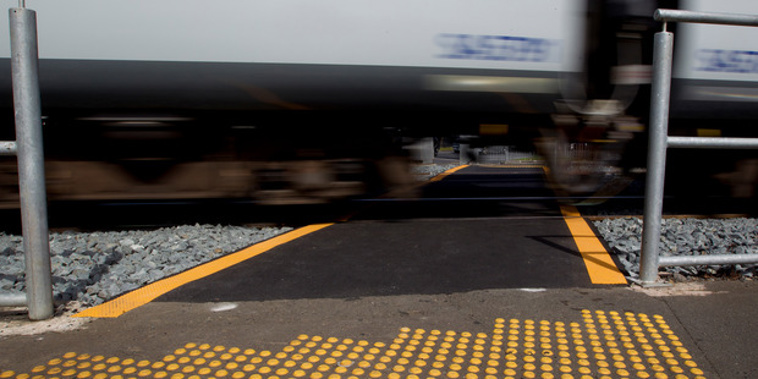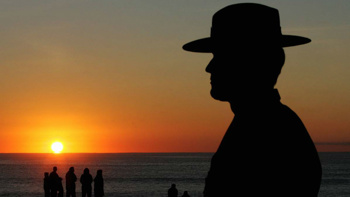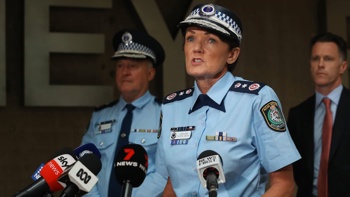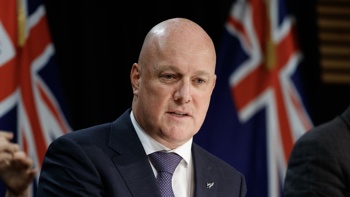
UPDATED 3.44PM Robinson helicopters and rail crossings have been added to the Transport Accident Investigation Commission's list of pressing concerns.
The watchlist contains five key concerns that affect transport safety.
Since 1996 there's been 14 mast bumping incidents with Robinson helicopters - 18 people have died.
Commissioner Davies Howard said four earlier recommendations made as a result of mast bumps haven't been actioned, and they're worried there's a real risk of more.
The second new concern is around railway crossings.
The commission says the systems designed to reduce the risk at rail crossings aren't keeping pace with change.
The concern covers both pedestrian and vehicle crossings.
There are about 300 Robinson helicopters registered in New Zealand, comprising around 40 per cent of the total helicopter fleet.
Mast bump is contact between an inner part of a main rotor blade or a rotor hub and the main rotor drive shaft or "mast". The outcome is usually catastrophic.
"We understand what mast bumping is, but it is often difficult to determine exactly what happened to cause the mast bump," said Commissioner and spokesman Stephen Davies Howard.
"We know the condition results when Low-G occurs - a bit like when you leave your stomach behind when going over a hump on a country road - or from an inappropriate control input. Low-G can be caused by turbulence, but it is not normally a condition that causes concern beyond discomfort.
"However, it can lead to mast bumping which too often has fatal consequences in Robinson helicopters with their rotor head design."
The Commission had also identified that the rate of Robinson helicopter in-flight break-ups accidents in New Zealand had not been significantly reduced by the adoption of US Federal Aviation Administration measures intended to help prevent such accidents.
"We also found that the format of the Robinson flight manuals and terminology did not draw enough attention to safety critical instructions and conditions that could result in serious injury or death," he said.
"Four of our earlier recommendations made as a result of Robinson mast bump accidents have yet to be actioned. We therefore remain concerned that there is a real risk that we will see more of this type of accident."
The second new Watchlist item concerns the safety for pedestrians and vehicles using level crossings.
The systems designed to reduce the risk at rail crossings were not keeping pace with change. These included change in vehicles, trains and passenger numbers; changes in rail infrastructure; pedestrian behaviours; and also ambiguities in who was responsible for the interface between road and rail.
"For instance, in early 2015 the Commission opened an inquiry into a pedestrian killed at the Morningside station in Auckland. The design of the pedestrian 'maze' at the time was constructed to force pedestrians to face in the direction of the approaching train before they turned to cross the tracks," Davies Howard said.
"However, with increasing rail traffic, signalling changes were made to allow trains to run in both directions with the result that trains could approach from behind pedestrians so defeating the maze design."
The Commission had also investigated several accidents where road-legal vehicles had become stuck on rail level crossings or had been too long to clear a rail level crossing and then stop, as required, at an adjacent road intersection.
"We found there is no routine procedure for measuring the profile or vertical alignment of the road at rail level crossings, which means there could be other level crossings in New Zealand on which low-slung but road-legal vehicles could become stuck."
Kiwirail has welcomed the report and the focus it has put on the transport sector's collective responsibility for the issue.
Group general manager asset management and investment David Gordon said safety is paramount for KiwiRail, and it has been making improvements to crossing safety, particularly in Auckland.
"All crossings are already subject to a specific Critical Risk Network focus within KiwiRail, and our codes specify inspection and quality standards," he said.
"We have been working with interested parties on how best to achieve safety at crossings and it is pleasing that the Transport Accident Investigation Commission has brought the collective responsibilities of all parties in the transport sector into focus.
"As the frequency of trains increases, particularly in the Auckland region, the safe integration of road and rail has become a greater priority and we have been working closely with NZTA and AT on the issues.
"In addition to the in-house risk safety network we have, along with the NZTA, established a Road Rail Integration Governance Group which has level crossings as part of its Terms of Reference.
"Right at this moment KiwiRail is running Level Crossing Seminars across the country aimed at bringing our teams, Road Controlling Authorities and NZTA closer on this issue."
The Commission has also updated its Watchlist concerning the need for recreational boat skippers to demonstrate their knowledge before taking to the water; further changes needed in the area of substance abuse; and also the need for transport regulators to do more to encourage and where reasonable, require air, rail and marine vehicle operators to use available tracking and location technologies.
The Commission's prime role is to determine the circumstances and causes of accidents and incidents to help ensure that such accidents will not be repeated in the future.
It can only make recommendations. It is up to the regulators, operators, the Government and the people involved in transport every day to embrace them or not.
The Watchlist highlights the Commission's most pressing concerns. The list may contain transport-related items that represent high social, economic or environmental risk. It may highlight systemic issues affecting transport safety, or it may be an issue that policy makers, regulators or operators have been slow to act on.
Full details of the Watchlist can be found at www.taic.org.nz
Take your Radio, Podcasts and Music with you









